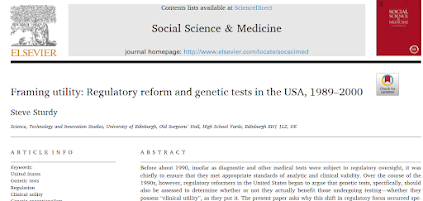In the past year or two, there's been great debate over CMS coverage of Alzheimer drugs like Aduhelm. Ten years ago, in 2013/2014, there was debate over whether CMS should cover the then-brand-new PET tracers for Alzheimers/Amyloid.
CMS decided such tracers would only be covered within CED clinical trials. Patients geting PET scans in those trials were almost entirely White people
With the new surge of interest in drugs, the old NCD blocking PET scan coverage in Alzheimer's has been more problematic. CMS canceled the NCD effective October 13, 2023 (there had been a comment cycle earlier in the year.) Since there is no NCD about PET Alzheimer tracers, their coverage is up to local MACs now.
Coverage at ACR here, Applied Radiology here, Alzforum here, Forbes here.
The decision memo may be of interest for its discussion of when and whether and how to drop an NCD in favor of local coverage. There are only infrequent examples of CMS proposing a new NCD topic, and deferring to local coverage right away in the final version, or enacting an NCD, and later dropping it in favor of local coverage. See discussion alone, here.
Find the October 13, 2023 final decision discussion here:
https://www.cms.gov/medicare-coverage-database/view/ncacal-decision-memo.aspx?proposed=N&ncaid=308
Find the NCD cancelation notice here (brief):
https://www.cms.gov/medicare-coverage-database/view/ncd.aspx?ncdid=356&ncdver=2&
Find the claims manual update, effective December 19 but claims payable from October 13 forward.
https://www.cms.gov/files/document/r12364cp.pdf
Nerd Note 1
Sometimes, many months elapse before CMS issues NCD transmittals, or updates instructions to its NCDs. Here, CMS acted to issue the transmittal to MACs in a few weeks, because MACs aren't responsible for new actions until such a "transmittal" occurs.
Nerd Note 2
Most CMS NCD decisions come out at their latest allowed due date. This one came out at 3 months (6 months allowed)
AI CORNER
Here is an AI summary of the "Analysis" part of the NCD, the decision-making part.
In summary, CMS is removing the NCD for beta amyloid PET scans due to advances in medical care, the importance of patient selection for treatment, evolving clinical research, stakeholder and patient feedback, the need for local MAC discretion, and the aim to address health disparities in AD diagnosis and treatment.
In more detail, the main reasons why CMS has decided to remove the national coverage determination (NCD) for beta amyloid Alzheimer PET scans are as follows:
Advances in Medical Care and Treatments: There have been significant advances in medical care and treatments for Alzheimer's disease (AD), including lifestyle changes, risk factor management, and the development of antiamyloid drug treatments. These advancements have rendered the once-in-a-lifetime limit on amyloid PET scans outdated.
Importance of Patient Selection: The development of antiamyloid drug treatments requires the confirmation of the presence of brain amyloid pathology, which can be achieved through amyloid PET scans. Ensuring that patients have brain amyloid is crucial to determining the benefits and avoiding potential harms of these treatments.
Evolving Clinical Research: Clinical research is now focused on new treatments directed against amyloid, which necessitate the use of tests like amyloid PET scans to confirm brain amyloid pathology.
Stakeholder and Patient Feedback: Stakeholders and patients have expressed concerns about the limitations on the choice of treatments and the appropriate management of antiamyloid treatments due to the once-in-a-lifetime limitation on amyloid PET scans.
Local MAC Discretion: Allowing Medicare Administrative Contractors (MACs) to make coverage determinations for amyloid PET scans based on individual patient factors and local clinical environments is seen as more flexible and responsive to evolving medical care and treatment standards.
Health Disparities: Recognizing health disparities in AD prevalence among racial and ethnic groups, CMS aims to address these disparities by allowing local MACs to determine coverage for amyloid PET scans for patients with Mild Cognitive Impairment (MCI) due to AD or mild AD dementia.
##
Those are reasons CMS used.
In a sidebar, Chat GPT asks if CMS's decision was unwise, here.
In a sidebar, Chat GPT 3.5 and 4 Classic, each summarize the four trade journal articles. Consolidated summary here.





















